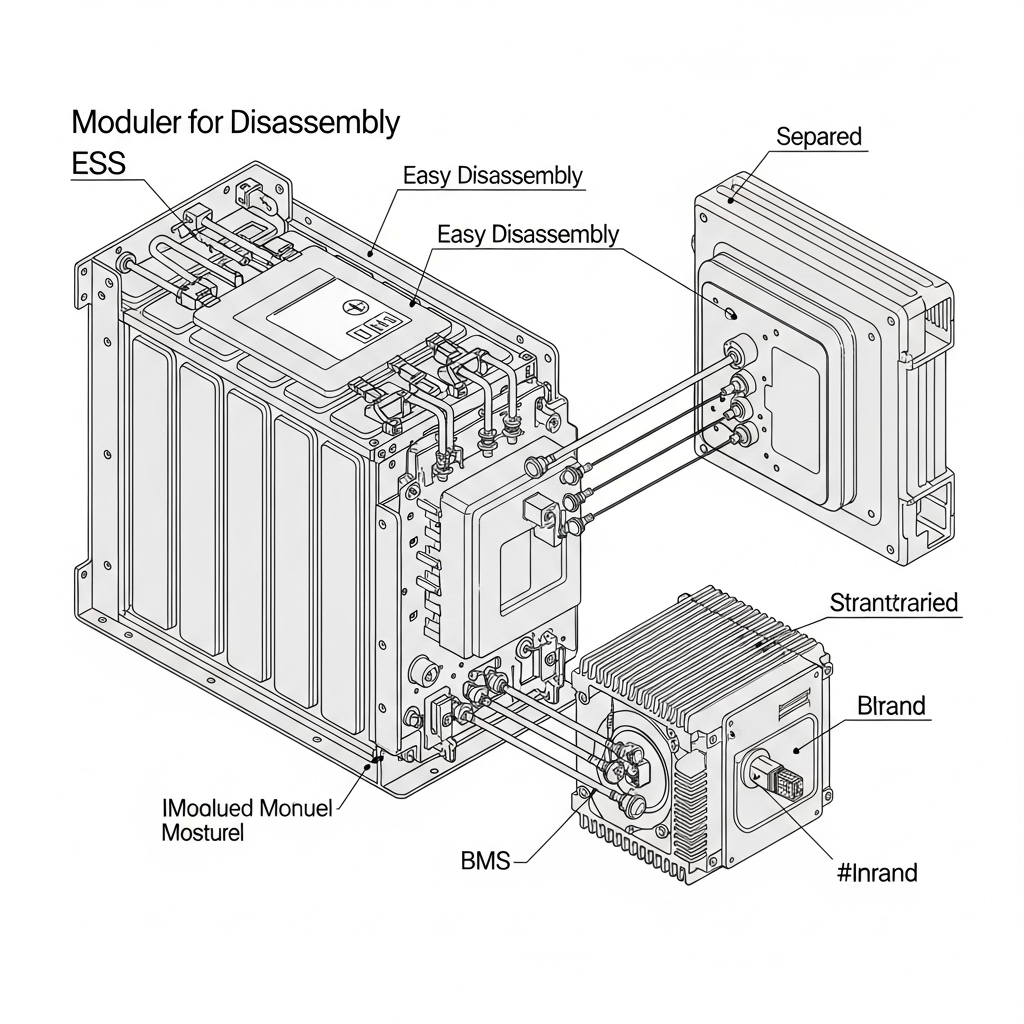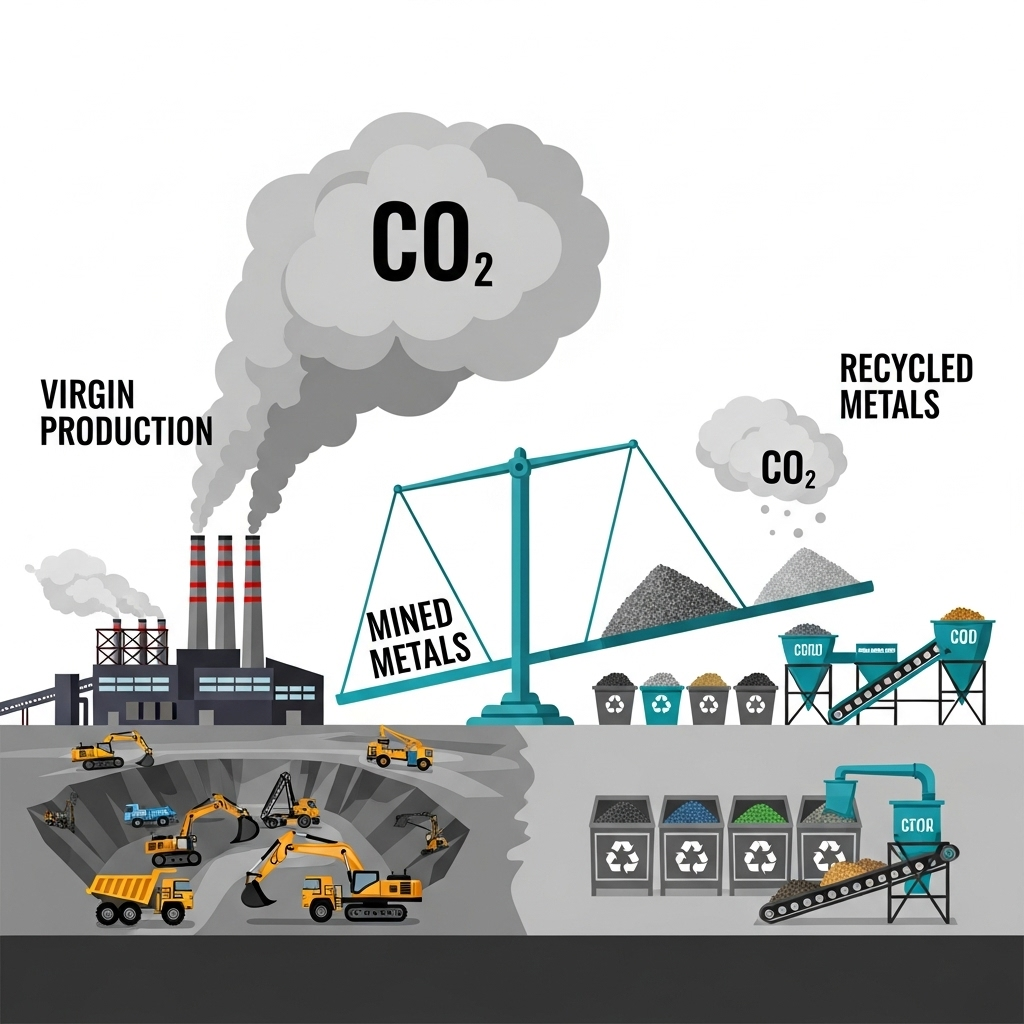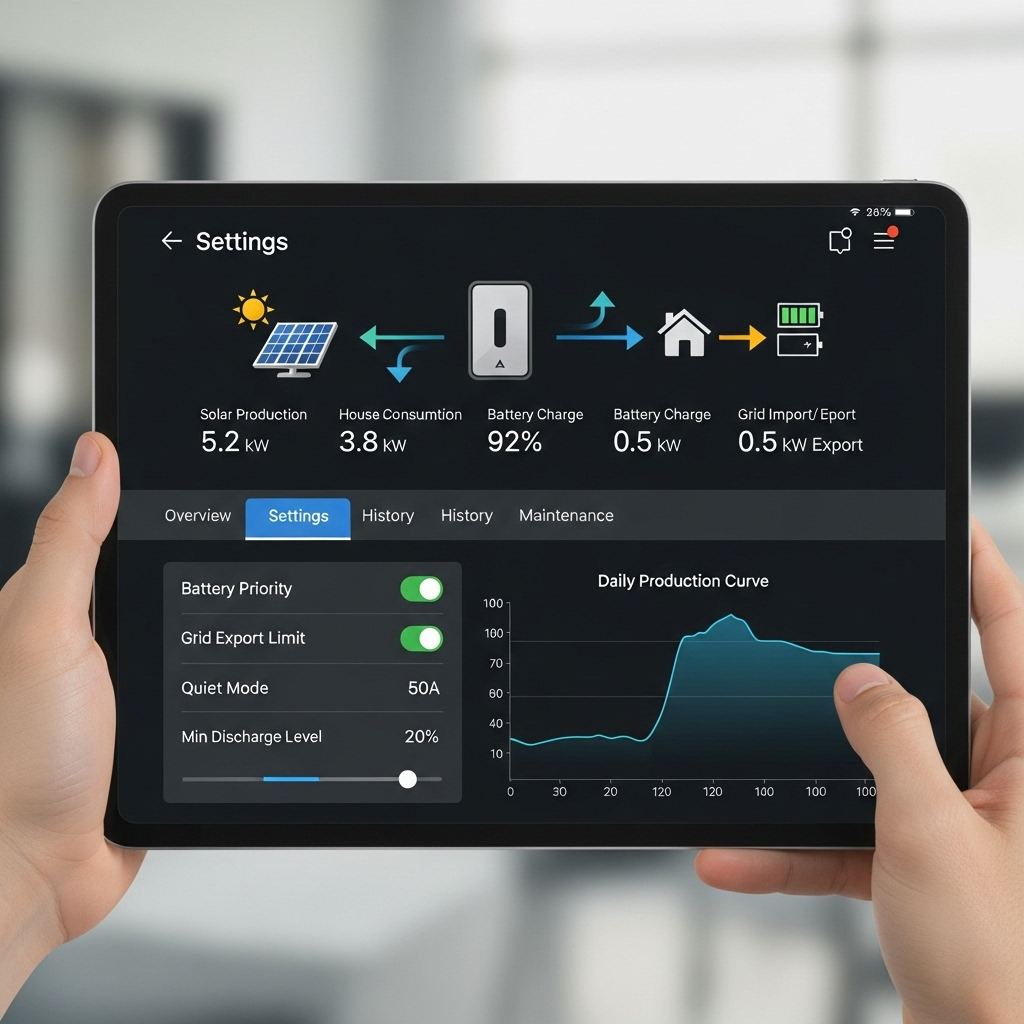The rapid adoption of Energy Storage Systems (ESS) is a major step forward for energy independence. Yet, this progress brings a future challenge: managing a massive volume of systems reaching their end-of-life. Many current ESS designs are not optimized for what comes next. This case study examines how a forward-thinking approach—Design for Disassembly (DfD)—can transform end-of-life systems from a waste problem into a valuable resource stream, paving the way for a true circular economy.
The Challenge with End-of-Life ESS Management
When an energy storage system can no longer perform its duties, it enters the end-of-life phase. Unfortunately, the path to recycling is often blocked by design choices made years earlier. This creates significant economic and environmental hurdles.
Complex and Integrated Designs
Many contemporary energy storage systems are built for compactness and performance, not for repair or recycling. Components like battery cells, the Battery Management System (BMS), and the inverter are often packed tightly. Manufacturers may use strong adhesives or welding to secure parts, making it extremely difficult and time-consuming for technicians to take them apart safely. This complexity not only raises labor costs for recyclers but also increases the risk of damaging valuable components during extraction.
Material and Chemical Complexity
An ESS is a mix of various materials. It contains valuable metals like lithium, cobalt, and nickel within the battery cells, alongside copper wiring, aluminum or steel casings, and various plastics. The current design of battery packs is often not optimised for easy disassembly. Separating these materials is a critical step for effective recycling. The presence of highly reactive elements like lithium also requires specialized handling procedures to prevent safety incidents, further complicating the process.
Economic and Environmental Costs
The combination of complex designs and materials leads to high costs. Manual disassembly is labor-intensive, and if it's too difficult, the entire unit may be shredded. Shredding mixes materials, making it harder to recover pure, high-value elements. As a result, a significant portion of the material may end up in landfills. A report from the International Energy Agency, The Role of Critical Minerals in Clean Energy Transitions, highlights that by 2040, recycled materials could reduce the primary supply requirements for key minerals by around 10%. Failing to design for recycling means we miss this opportunity to create a more secure and sustainable supply chain.
Principles of Design for Disassembly (DfD)
Design for Disassembly is a proactive strategy. It involves making intentional choices during the product engineering phase to simplify future repairs, upgrades, and recycling. The goal is to make taking an ESS apart as easy as putting it together.
Modular and Standardized Components
A modular design is the foundation of DfD. Instead of a single, integrated block, the ESS is built from distinct modules. The battery pack, BMS, and inverter are separate units that can be easily accessed and removed. This approach relies on standardized fasteners, like screws and bolts, instead of permanent adhesives or welds. This not only facilitates end-of-life recycling but also makes repairs and upgrades much simpler for the system owner.
Material Selection and Labeling
Smart material choices are crucial. This includes using fewer types of plastics and selecting materials that are widely recyclable. Equally important is clear and consistent labeling. Each major component should be marked with its material composition using standardized codes. This simple step eliminates guesswork for recyclers, allowing them to quickly sort materials and channel them into the correct recycling streams. This concept aligns with the development of a 'Material Passport' or 'Digital Battery Passport,' which provides a full history of the product's components.
Simplifying Connections
Complex, proprietary wiring harnesses are a major obstacle to efficient disassembly. A DfD approach favors standardized connectors that can be unplugged without special tools. Reducing the overall number of connections and organizing wiring in an accessible way can dramatically cut down the time and effort required to dismantle the system safely.
A Case Study in Action: Reimagining an ESS for Circularity
To illustrate the impact of DfD, let's compare a conventional ESS with one redesigned for circularity. This hypothetical case study shows the practical benefits of applying DfD principles.
The 'Before' Scenario: A Conventional ESS
A typical system might feature a welded steel casing. Inside, battery cells are held in place with strong industrial adhesive. The wiring is a tangled web of proprietary connectors. A technician attempting disassembly would need specialized tools to cut open the casing and would struggle to pry the cells apart without damaging them. The process is slow, hazardous, and yields a low rate of high-purity material recovery.
The 'After' Scenario: A DfD-Optimized ESS
The redesigned system features an aluminum casing held together with standard screws. Inside, battery modules slide into place on rails and connect via simple, robust plugs. Each module is clearly labeled with a QR code that links to its material data sheet. A technician can dismantle the entire system in under 30 minutes using basic hand tools. The modules can be easily tested for second-life applications or sent directly to specialized recyclers, ensuring maximum material recovery.
Data-Driven Comparison
The advantages become clear when we compare the two approaches side-by-side.
| Feature | Conventional ESS | DfD-Optimized ESS |
|---|---|---|
| Fasteners | Welds, Adhesives | Standardized Screws |
| Average Disassembly Time | 3-4 hours | Under 30 minutes |
| Labor Cost for Disassembly | High | Low |
| Material Recovery Rate | ~50-60% | >90% |
| Potential for Second-Life Use | Low | High |
| Safety During Disassembly | Moderate Risk | Low Risk |
The Broader Impact: Economic and Regulatory Drivers
Adopting DfD is more than just good engineering; it is a strategic response to growing economic and regulatory pressures. It builds a more resilient and profitable energy storage industry.
The Economic Case for Circularity
DfD creates economic value. It lowers the cost of recycling, making the recovery of valuable materials more profitable. According to a recent IEA analysis, The State of Energy Innovation, recycled battery metals like nickel, cobalt, and lithium can have up to 80% lower greenhouse gas emissions than primary materials from mining. By creating a steady stream of high-quality recycled materials, manufacturers can reduce their reliance on volatile primary mineral markets and insulate themselves from supply chain disruptions.
The Role of Policy and Regulation
Governments are recognizing the need for a circular economy. Policies like Extended Producer Responsibility (EPR) are becoming more common. EPR schemes require manufacturers to take financial or physical responsibility for their products at the end of their life. This directly incentivizes designing products that are easier and cheaper to recycle. As noted by the IEA, clear objectives and active enforcement are necessary for these policies to succeed and to streamline the international movement of batteries for recycling.
Enhancing System Performance and Longevity
A modular design also benefits the consumer during the system's operational life. If a single component fails, it can be easily replaced without needing to replace the entire system. This extends the product's lifespan and reduces long-term ownership costs. Understanding the factors that influence system longevity is crucial. Key metrics like Depth of Discharge (DoD) and cycle life directly impact when a battery reaches its end-of-life. A well-designed system not only performs better but is also easier to maintain. For a deeper look at these metrics, you can review this ultimate reference on solar storage performance.
Looking Ahead: Building a Circular Future
Designing for disassembly represents a fundamental shift in how we think about energy storage systems. It moves us away from a linear 'take-make-dispose' model and toward a circular one where resources are continuously reused. This approach is not merely about managing waste. It is about smart economics, resource security, and building a truly sustainable foundation for our energy future. For manufacturers, it is a pathway to greater efficiency and resilience. For consumers, it promises longer-lasting and more serviceable products. For everyone, it is a necessary step toward closing the loop on clean energy.
Frequently Asked Questions
What is 'Design for Disassembly' (DfD) in the context of ESS?
Design for Disassembly (DfD) is an engineering approach focused on creating products that can be easily and cost-effectively taken apart at the end of their life. For an ESS, this means using modular components, standardized fasteners like screws instead of glue, and providing clear labeling to facilitate repair, reuse, and recycling.
Why is it difficult to recycle current energy storage systems?
Many current ESS units are difficult to recycle due to their complex and integrated construction. The use of strong adhesives, welded casings, and proprietary connectors makes it hard to separate different materials. This complexity increases labor costs, reduces safety, and lowers the recovery rate of valuable materials like lithium and cobalt.
What are the main benefits of designing an ESS for easy recycling?
The primary benefits include lower recycling costs, higher recovery rates of valuable raw materials, and enhanced safety for recycling technicians. It also creates economic value by feeding recovered materials back into the supply chain, reduces landfill waste, and makes systems easier to repair and upgrade, extending their useful life.
How does a modular ESS design help with recycling and repair?
A modular design separates the ESS into distinct, easily removable units, such as the battery pack, BMS, and inverter. This allows for targeted repairs—replacing only the faulty module instead of the entire system. At end-of-life, it allows recyclers to quickly separate components and send them to the appropriate recycling facility, maximizing material recovery.
Are there regulations that encourage designing for disassembly?
Yes, regulations are emerging globally. Extended Producer Responsibility (EPR) policies are a key driver, as they make manufacturers responsible for the end-of-life management of their products. This provides a strong financial incentive to design products that are cheaper and easier to recycle. Regulations like the EU Battery Passport also promote transparency and circularity.





Leave a comment
All comments are moderated before being published.
This site is protected by hCaptcha and the hCaptcha Privacy Policy and Terms of Service apply.